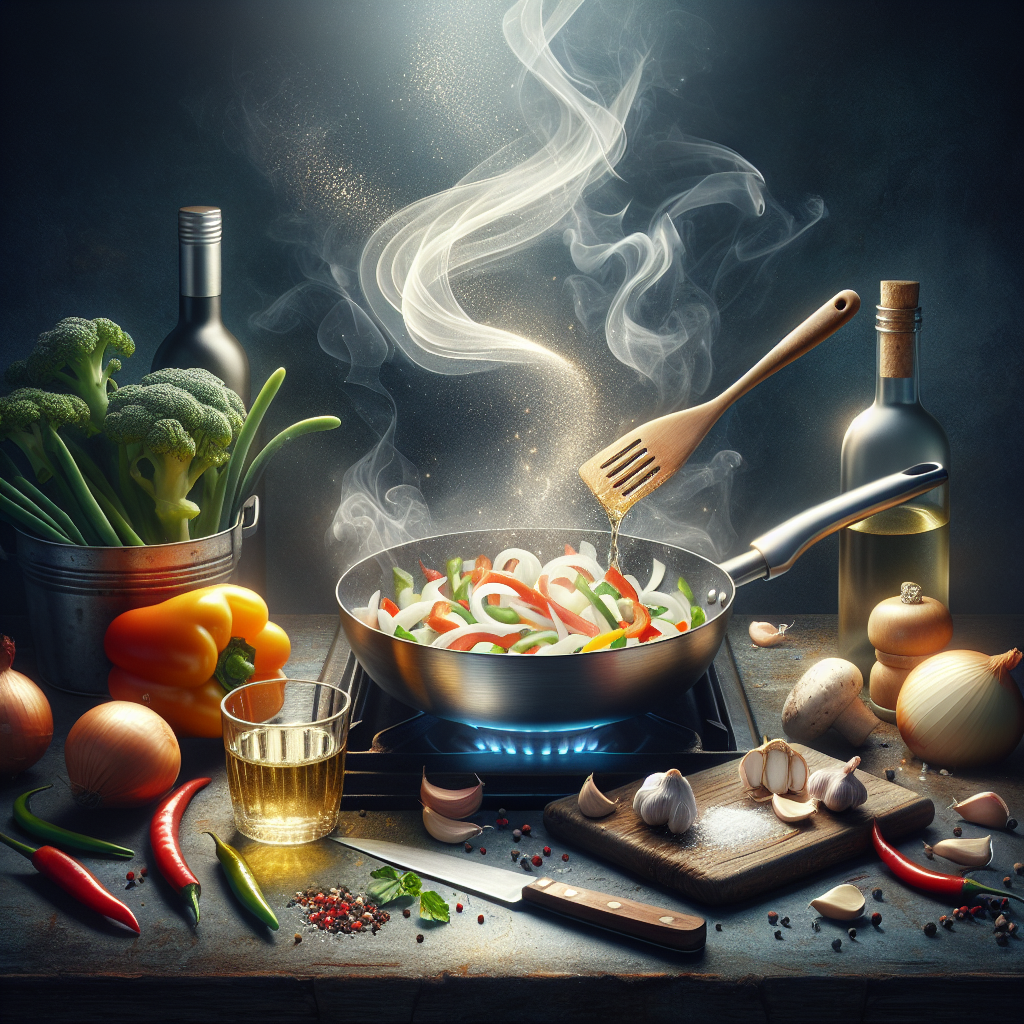Sautéing is a fundamental cooking technique that transforms simple ingredients into extraordinary dishes. This method, often regarded as the backbone of culinary arts, allows for the development of robust flavors and textures. Whether you’re a novice cook or a seasoned chef, mastering sautéing can elevate your culinary skills. Here’s a comprehensive guide to help you get started.
What is Sautéing?
Sautéing involves cooking food quickly in a small amount of fat over relatively high heat. This method promotes browning, caramelization, and the development of complex flavors. Typically, it’s used for vegetables, protein, and even grains.
Essential Tools
-
Skillet or Sauté Pan: A wide, flat cooking surface is critical for even heat distribution and efficient browning.
-
Spatula or Wooden Spoon: Use utensils that won’t scratch your cookware; silicone or wood is ideal.
- Lid: For specific techniques or when cooking foods that require moisture retention.
Choosing Your Ingredients
Freshness Matters
Start with high-quality, fresh ingredients. The flavor of your dish is directly tied to the quality of its components. Choose seasonal vegetables, fresh herbs, and well-sourced proteins.
Cut Uniformly
Cut your ingredients to a uniform size to ensure even cooking. Vegetables should be sliced thinly or chopped into small, consistent pieces, while proteins should be cut into bite-sized portions.
The Perfect Heat
Preheat Your Pan
One of the crucial steps in sautéing is preheating your pan. A hot pan ensures proper searing and prevents food from becoming soggy. Aim for medium to medium-high heat, adjusting as necessary based on your ingredients.
Add the Fat
Once the pan is hot, add a suitable cooking oil or fat. Options include olive oil, vegetable oil, butter, or a combination. The fat should shimmer but not smoke. This indicates it’s hot enough to start cooking.
The Technique of Sautéing
Layering Flavors
-
Aromatics First: Begin with aromatics like garlic, onions, or shallots. Sauté them briefly to release their flavors before adding other ingredients.
- Adding Ingredients: Add ingredients in stages, starting with those that take longer to cook (like heartier vegetables) and finishing with more delicate ones (like leafy greens).
Stirring and Tossing
Keep the food moving in the pan to ensure even cooking and prevent sticking. Stirring allows for a consistent browning process and helps to incorporate flavors throughout the dish.
Avoid Overcrowding
Overcrowding the pan can cause ingredients to steam rather than sauté. Cook in batches if necessary, ensuring that there is enough space for air circulation.
Finishing Touches
Season Properly
Season your food throughout the cooking process, not just at the end. This helps the flavors to build as the dish develops. Use salt, pepper, and other spices or herbs to enhance the taste.
Deglaze the Pan
After sautéing, consider deglazing the pan. Add a splash of wine, broth, or even water to lift the browned bits stuck to the bottom. This technique adds depth to sauces and enhances the overall flavor profile.
Garnishing
Finish with fresh herbs, a squeeze of lemon, or a sprinkle of cheese to brighten up the dish. This not only enhances flavor but also adds visual appeal.
Common Mistakes to Avoid
-
Not Preheating the Pan: A common error that leads to uneven cooking.
-
Using Too Much Fat: A tablespoon or two is usually sufficient. Excess fat can make dishes greasy.
- Ignoring Color: Look for golden brown edges to ensure proper caramelization. This not only adds flavor but also visual appeal.
Conclusion
Sautéing is a versatile cooking technique that opens the door to a world of flavors. By understanding the principles of heat, fat, and timing, you can master this art in no time. Whether you’re whipping up a quick weeknight dinner or preparing for an elegant gathering, the ability to sauté with confidence will elevate your culinary creations. With practice and creativity, you’ll soon find yourself creating delicious, flavorful dishes that impress both yourself and your guests. Happy sautéing!

